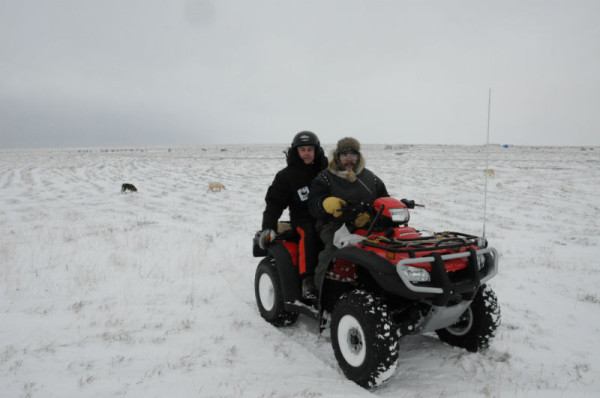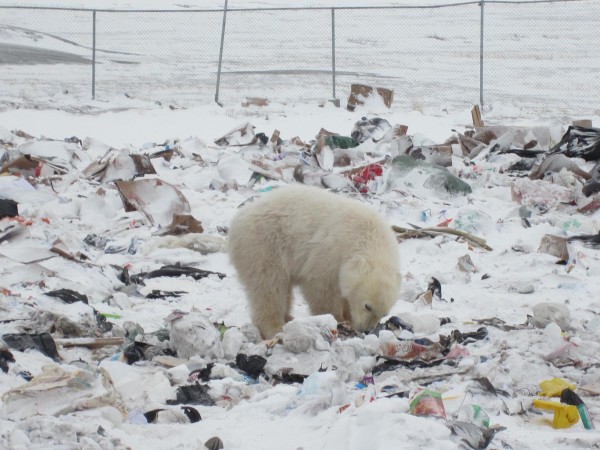Polar Bear Week: Good fences make good neighbours
It’s 3 a.m., minus 40 degrees Celsius, and Leo Ikakhik is on his ATV, patrolling the perimeter. Armed with years of experience as a local hunter and wildlife worker, Leo was hired as a polar bear monitor as part of the Human-Polar Bear Conflict Reduction Project – a joint initiative of the Hamlet of Arviat, the Government of Nunavut, and WWF-Canada.
As arctic sea ice melts at an alarming rate, polar bears are spending increasing time ashore and lingering near human settlements, looking for food. From a safe distance, it’s easy to think of polar bears as cute and cuddly. It’s easy to forget that they are, in fact, the largest land predators in the world. That is, until one shows up in your backyard.
“Maintaining a harmonious relationship with nature is something that the people of Arviat highly value,” says Bob Leonard, Mayor of Arviat. In this spirit, the town began looking for ways to keep both bears and people safe from each other. In 2011, WWF got involved to help scale up their efforts. Through support from the Government of Nunavut and WWF – including funding from long-time partner Coca-Cola—the partnership launched an expanded project focused on practical solutions.
Indeed, this includes “good fences.” Seven solar-powered electric fences, to be exact, installed around dog sled teams to deter polar bears from eating the dogs and their food. New funding also allowed the Hamlet to hire Leo as a polar bear monitor to patrol Arviat through the night between October and December, working in conjunction with the Government of Nunavut’s local Conservation Officers.
“As a monitor, I keep an eye out for polar bears coming into town, and when one is there, I chase it out of town”, says Leo. His best tools: “bear bangers” – loud noise-makers – and rubber bullets that scare the bears back out of the community.
In 2012, the project achieved a major milestone: zero defense kills of polar bears, down from eight in 2010. Of course, nature is hard to predict, and changes in wildlife patterns vary. Already this year Arviat has seen an increase in polar bear activity around the town. “But we proved the suite of measures can work”, says Pete Ewins, WWF-Canada’s Senior Species Officer, “and that changes the equation both for bears and people.”
Now, WWF is working with Parks Canada, the Nunavut Department of Environment and other partners to roll out a standard polar bear guard training course for communities across the territory. “The changing Arctic is the new normal and we need to do everything we can to help communities and wildlife adapt,” says Pete. But he’s quick to remind that fighting climate change is the essential solution to the main problem. “If we as a global society don’t deal with GHG emissions, then eventually there will be no polar bears in Arviat and possibly many other places, because of further sea ice retreat. And that’s not something that anyone wants to see happen.”
Support our Arctic work today, and – through the Arctic Home campaign – Coca-Cola® will match your donation dollar-for-dollar until March 15, 2014, to a maximum of $1 million USD (Canada and U.S. only). Don’t miss this chance to double the impact of your gift, give today!



